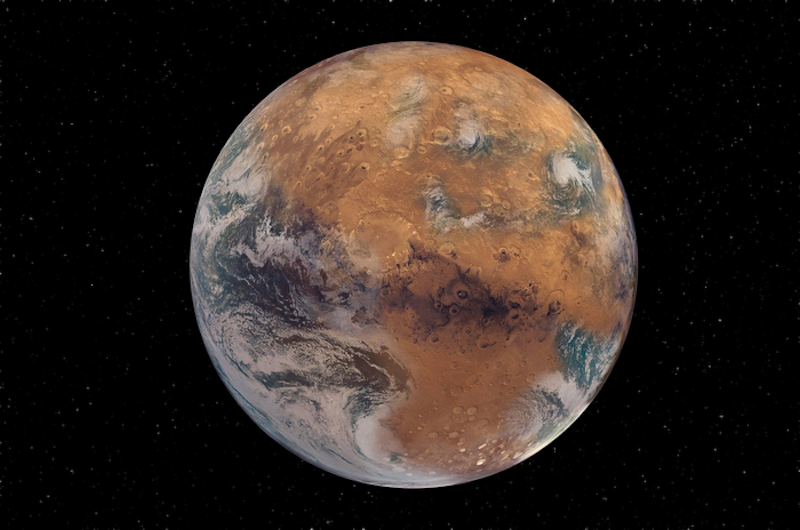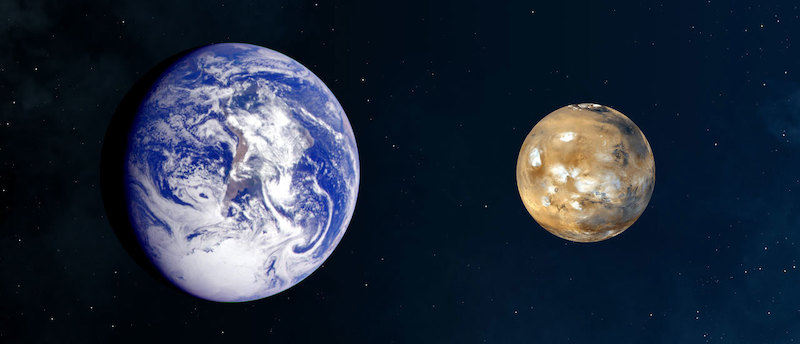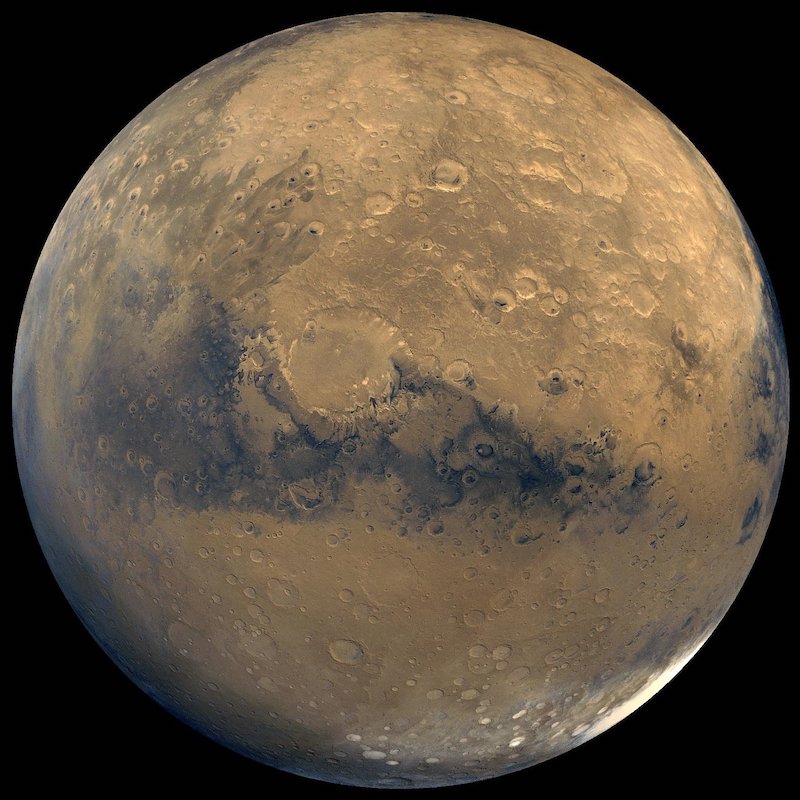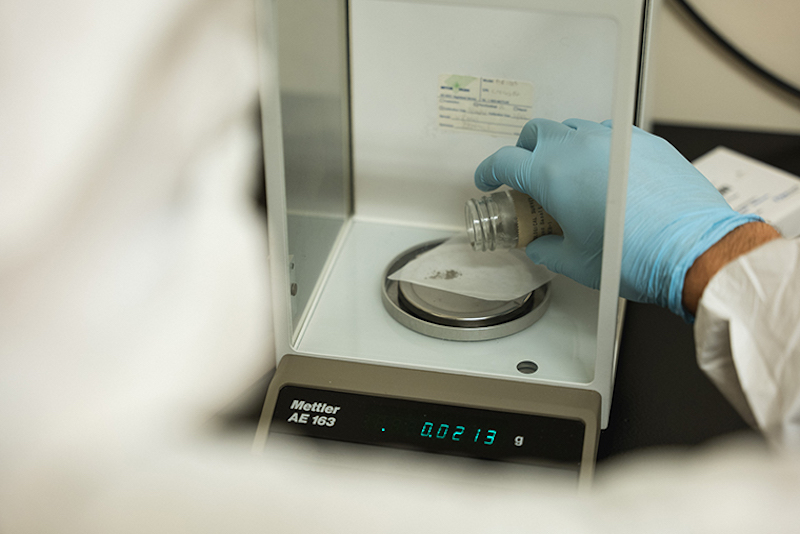
Was there ever life on Mars? We still don’t know for sure. Ongoing findings from rovers, landers and orbiters suggest the planet was habitable – suitable for life – in the past. Of course, habitable doesn’t mean inhabited. And how habitable and for how long? Those are key questions scientists want to answer. On September 20, 2021, researchers at Washington University in St. Louis released a new study, suggesting that, while habitable for a time, Mars’ small size meant that its potential habitability was limited from the start.
The peer-reviewed findings were published in the Proceedings of the National Academy of Sciences on September 20. A full text version is also available from the 52nd Lunar and Planetary Science Conference 2021.

Little to no surface water? Blame Mars’ small size
Mars once had a lot of water on its surface, as various missions to the planet have confirmed. There were rivers, lakes and maybe even an ocean. So what happened to them? The general explanation is that the planet’s atmosphere later became too thin and cold to support liquid water on the surface. This likely is connected to the loss of Mars’ early magnetic field. There is also evidence that some or maybe even most of that water is now bound in the planet’s crust, trapped in minerals.
However, the underlying reason for Mars’ water loss may be even more basic than that: the planet was simply too small to begin with. According to the researchers, the planet wasn’t massive enough to continue to hold on to all of its water. As Kun Wang, lead author of the new paper, explained:
Mars’ fate was decided from the beginning. There is likely a threshold on the size requirements of rocky planets to retain enough water to enable habitability and plate tectonics, with mass exceeding that of Mars.

Using potassium to assess Mars’ habitability
How did Wang and his colleagues determine that Mars’ small size had a big impact on its habitability? They studied the isotopes of the mineral potassium in 20 different Martian meteorites. By doing so, they could estimate the presence, distribution and abundance of volatile elements, such as water.
What they found was interesting. During its initial formation, Mars lost more potassium and other volatiles than Earth, but retained more of these volatiles than the moon and asteroid 4-Vesta. Those two bodies were used for comparison, since both are smaller and drier than Mars. The results implied a definitive correlation between body size and potassium isotopic composition.
According to coauthor Katharina Lodders:
The reason for far lower abundances of volatile elements and their compounds in differentiated planets than in primitive undifferentiated meteorites has been a longstanding question. The finding of the correlation of K isotopic compositions with planet gravity is a novel discovery with important quantitative implications for when and how the differentiated planets received and lost their volatiles.
Chemical clues from Martian meteorites
Wang added:
Martian meteorites are the only samples available to us to study the chemical makeup of the bulk Mars. Those Martian meteorites have ages varying from several hundred millions to 4 billion years and recorded Mars’ volatile evolution history. Through measuring the isotopes of moderately volatile elements, such as potassium, we can infer the degree of volatile depletion of bulk planets and make comparisons between different solar system bodies.
It’s indisputable that there used to be liquid water on the surface of Mars, but how much water in total Mars once had is hard to quantify through remote sensing and rover studies alone. There are many models out there for the bulk water content of Mars. In some of them, early Mars was even wetter than the Earth. We don’t believe that was the case.

Implications for exoplanets
The study could have implications for planets other than Mars, too; in particular, for exoplanets, worlds that orbit distant stars. Also, if a planet is too close to its star, it’s more difficult for that planet to retain its volatiles, like water. This is in relation to the habitable zone, where temperature can affect a planet’s habitability. If a planet is too close to its star, it will be too hot for liquid water. If it’s too far away, the water would likely be in the form of ice. According to Klaus Mezger at the Center for Space and Habitability at the University of Bern in Switzerland:
This study emphasizes that there is a very limited size range for planets to have just enough but not too much water to develop a habitable surface environment. These results will guide astronomers in their search for habitable exoplanets in other solar systems.
Both size and distance important for habitability
It would seem then that both size and distance from the star need to be considered when it comes to a planet’s potential habitability. In that regard, Earth would be in that sweet spot; not too small and within the sun’s habitable zone.
Wang said:
The size of an exoplanet is one of the parameters that is easiest to determine. Based on size and mass, we now know whether an exoplanet is a candidate for life, because a first-order determining factor for volatile retention is size.
Based on the new findings, it appears that poor Mars was at a disadvantage, in terms of habitability, right from the beginning. But hope for findings traces of life are not lost. We just have to keep looking, and the more knowledge we have of Mars’ past, the smarter we can conduct that search.

Bottom line: Mars was once a wet and habitable world, so what happened to change that? According to a new study from Washington University in St. Louis, Mars’ small size is likely to blame for why it lost most of its water and atmosphere.
Source: Potassium isotope composition of Mars reveals a mechanism of planetary volatile retention
Via Washington University in St. Louis
The post Mars’ small size limited its habitability first appeared on EarthSky.
from EarthSky https://ift.tt/3CMa3Q7

Was there ever life on Mars? We still don’t know for sure. Ongoing findings from rovers, landers and orbiters suggest the planet was habitable – suitable for life – in the past. Of course, habitable doesn’t mean inhabited. And how habitable and for how long? Those are key questions scientists want to answer. On September 20, 2021, researchers at Washington University in St. Louis released a new study, suggesting that, while habitable for a time, Mars’ small size meant that its potential habitability was limited from the start.
The peer-reviewed findings were published in the Proceedings of the National Academy of Sciences on September 20. A full text version is also available from the 52nd Lunar and Planetary Science Conference 2021.

Little to no surface water? Blame Mars’ small size
Mars once had a lot of water on its surface, as various missions to the planet have confirmed. There were rivers, lakes and maybe even an ocean. So what happened to them? The general explanation is that the planet’s atmosphere later became too thin and cold to support liquid water on the surface. This likely is connected to the loss of Mars’ early magnetic field. There is also evidence that some or maybe even most of that water is now bound in the planet’s crust, trapped in minerals.
However, the underlying reason for Mars’ water loss may be even more basic than that: the planet was simply too small to begin with. According to the researchers, the planet wasn’t massive enough to continue to hold on to all of its water. As Kun Wang, lead author of the new paper, explained:
Mars’ fate was decided from the beginning. There is likely a threshold on the size requirements of rocky planets to retain enough water to enable habitability and plate tectonics, with mass exceeding that of Mars.

Using potassium to assess Mars’ habitability
How did Wang and his colleagues determine that Mars’ small size had a big impact on its habitability? They studied the isotopes of the mineral potassium in 20 different Martian meteorites. By doing so, they could estimate the presence, distribution and abundance of volatile elements, such as water.
What they found was interesting. During its initial formation, Mars lost more potassium and other volatiles than Earth, but retained more of these volatiles than the moon and asteroid 4-Vesta. Those two bodies were used for comparison, since both are smaller and drier than Mars. The results implied a definitive correlation between body size and potassium isotopic composition.
According to coauthor Katharina Lodders:
The reason for far lower abundances of volatile elements and their compounds in differentiated planets than in primitive undifferentiated meteorites has been a longstanding question. The finding of the correlation of K isotopic compositions with planet gravity is a novel discovery with important quantitative implications for when and how the differentiated planets received and lost their volatiles.
Chemical clues from Martian meteorites
Wang added:
Martian meteorites are the only samples available to us to study the chemical makeup of the bulk Mars. Those Martian meteorites have ages varying from several hundred millions to 4 billion years and recorded Mars’ volatile evolution history. Through measuring the isotopes of moderately volatile elements, such as potassium, we can infer the degree of volatile depletion of bulk planets and make comparisons between different solar system bodies.
It’s indisputable that there used to be liquid water on the surface of Mars, but how much water in total Mars once had is hard to quantify through remote sensing and rover studies alone. There are many models out there for the bulk water content of Mars. In some of them, early Mars was even wetter than the Earth. We don’t believe that was the case.

Implications for exoplanets
The study could have implications for planets other than Mars, too; in particular, for exoplanets, worlds that orbit distant stars. Also, if a planet is too close to its star, it’s more difficult for that planet to retain its volatiles, like water. This is in relation to the habitable zone, where temperature can affect a planet’s habitability. If a planet is too close to its star, it will be too hot for liquid water. If it’s too far away, the water would likely be in the form of ice. According to Klaus Mezger at the Center for Space and Habitability at the University of Bern in Switzerland:
This study emphasizes that there is a very limited size range for planets to have just enough but not too much water to develop a habitable surface environment. These results will guide astronomers in their search for habitable exoplanets in other solar systems.
Both size and distance important for habitability
It would seem then that both size and distance from the star need to be considered when it comes to a planet’s potential habitability. In that regard, Earth would be in that sweet spot; not too small and within the sun’s habitable zone.
Wang said:
The size of an exoplanet is one of the parameters that is easiest to determine. Based on size and mass, we now know whether an exoplanet is a candidate for life, because a first-order determining factor for volatile retention is size.
Based on the new findings, it appears that poor Mars was at a disadvantage, in terms of habitability, right from the beginning. But hope for findings traces of life are not lost. We just have to keep looking, and the more knowledge we have of Mars’ past, the smarter we can conduct that search.

Bottom line: Mars was once a wet and habitable world, so what happened to change that? According to a new study from Washington University in St. Louis, Mars’ small size is likely to blame for why it lost most of its water and atmosphere.
Source: Potassium isotope composition of Mars reveals a mechanism of planetary volatile retention
Via Washington University in St. Louis
The post Mars’ small size limited its habitability first appeared on EarthSky.
from EarthSky https://ift.tt/3CMa3Q7

Aucun commentaire:
Enregistrer un commentaire